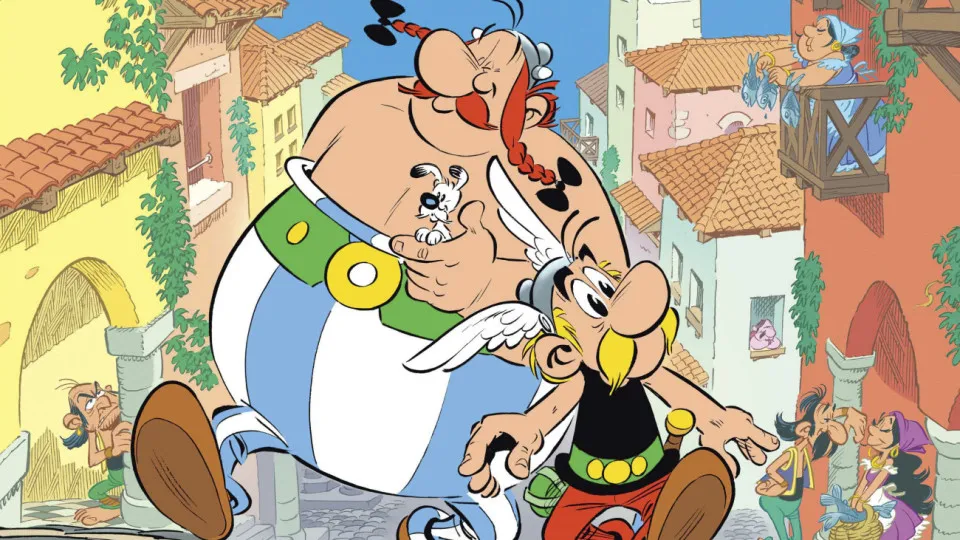
“It is a tribute to Lusitanian culture, to saudade. We went to Portugal, attended fado concerts, and it was wonderful. When we create an album inspired by a real country, we want the country to appreciate it,” stated screenwriter Fabcaro, the artistic name of Fabrice Caro, in an interview at the Éditions Albert René offices.
During one of his three visits to Portugal, Fabcaro, who authored ‘Astérix – O Lírio Branco’ (2023), conceived the idea of taking the two Gauls to Portugal for the first time to share “a bit of Lusitanian culture” and Portugal’s history with readers, after having visited more than 15 countries accompanied by their loyal companion, Dogmatix.
“I wanted an album set by the sea, in a southern country, with water, sun, beautiful light, colorful facades. An album that would make me want to go on vacation, so Portugal was perfect,” he added.
Despite having little knowledge about Portugal during the Roman era, the story emerged through research, which included learning “the history of Viriathus” and the production of garum (a popular sauce in Ancient Rome made from fermented fish and salt), creating a new adventure for the Gallic duo enveloped in a sense of saudade, a symbol of Portuguese identity.
The 48-page book also addresses various stereotypes, with references to fado, codfish, pavements, tiles, and wine, always with the characters’ characteristic humor, which the author hopes “contains no errors” and will delight everyone, but especially Portuguese readers.
“I try to make an album that works in French, that is funny and the best possible in French, without worrying too much about how it will translate, but when I finished, I thought: poor translators, how will they translate the jokes and wordplays?” Fabcaro confessed.
In March, when it was announced that the new Roman era adventure would be set in Lusitanian lands, the authors revealed to the international press that the story involves a character who already appeared in the 1971 comic ‘The Domain of the Gods’, a Lusitanian slave.
“Since we decided it would be Lusitania, I thought of that little character, that slave. I really like the idea of making connections between albums,” said Fabcaro, revealing they had to name him, as he would be responsible for bringing Asterix and Obelix to Olissipo (Lisbon).
The global print run is expected to be five million copies, in 19 languages and dialects, for the 41st album of one of the most renowned comic series, which debuted on October 29, 1959, in the French magazine Pilote by the hands of René Goscinny and Albert Uderzo.
This new album, which took a year and a half to produce, was illustrated by Didier Conrad, who has illustrated seven Asterix albums, attempting to preserve the “difficult” task of maintaining Uderzo’s style, “which evolved greatly through the albums,” while bringing to life new characters and Portuguese landscapes.
“Uderzo always did as he pleased, often varying from album to album. So, I have to choose what seems best to me, and that can be complicated,” stated Didier Conrad.
According to the illustrator, after over 60 years of adventure, humor, and cultural blending, Asterix remains “timeless” by “speaking of Antiquity,” where each story develops a parallel of Antiquity with behaviors and situations that closely resemble those found in current reality, drawing links between the present and the Roman era.
‘Astérix na Lusitânia’, published today in Portugal by Asa Publishing with a print run of 80,000 copies, will be presented by the authors at the El Corte Inglés cultural space on October 27, with a presentation by comedian Hugo van der Ding.




